

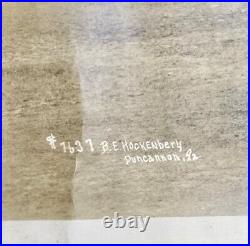
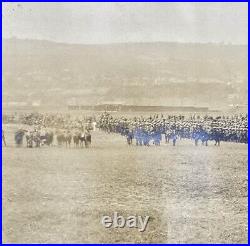
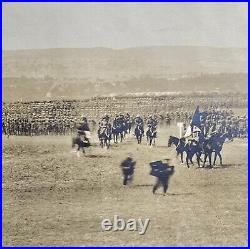

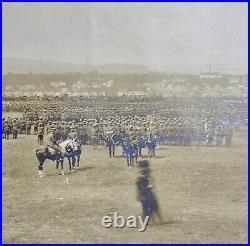

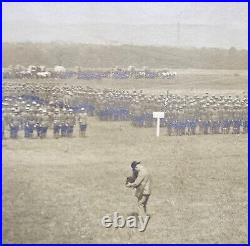

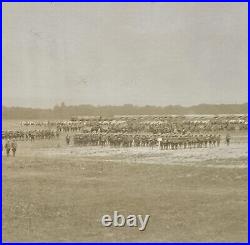
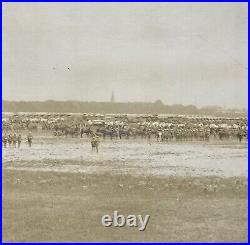


In fair preowned condition. Moderate creases and tape at corners. Discoloration to top right. No tears or writing. Measures approximately 43″ long and 8″ tall.


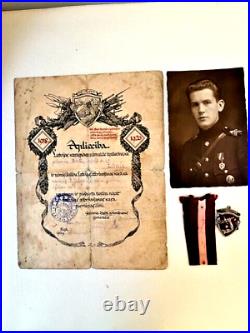
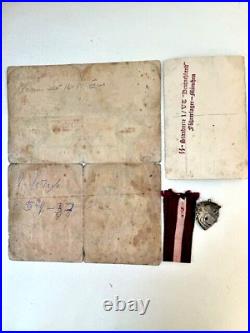
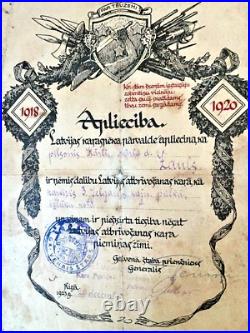
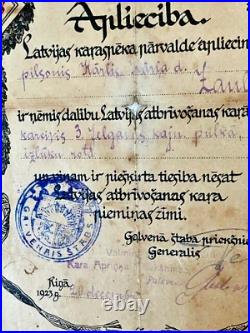
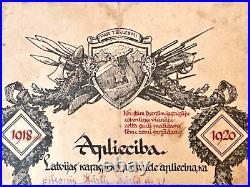
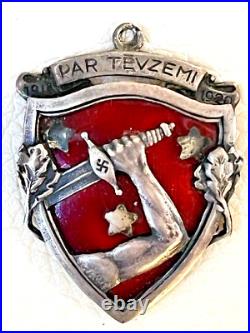
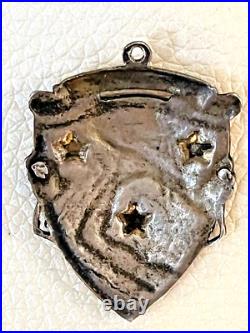



Certificate is dated December 20,1923 (it is original to the era, not reprint). The award was established by the government of Latvia on May 2, 1923 for Latvian war veterans. Medal dimensions: 1.35″ x 1.1″ (3.5 cm x 2.9 cm). Certificate dimensions: 7.2″ x 9.3″ (18.2 cm x 23.5 cm). Ribbon dimensions: 5.5″x 1.3″ (14 cm x 3.3 cm). Photograph dimensions: 5.3″ x 3.5″ (13.5 cm x 9 cm). Photograph has WW2 German elite stamp on the reverse side. Looks like the soldier served in German elite unit during WW2? Very good condition consistent with age and use. All items were checked with black light lamp. Please see the photos for condition and the details – they are part of the description.


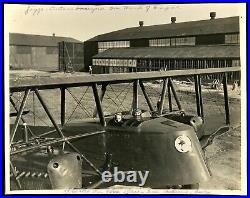

1920s Martin NBS-2 Bomber Photograph Brooks Air Force Base San Antonio TX. 8 7/8″ X 7″. Condition: Very Good to Fine. All Items Are Original NOT Reproductions Item will be packaged w/ reinforcement to ensure safe arrival. Check Out Our Store For More Ephemera, Stamps & Postal History. We Will Always Strive To Be As Accurate As Possible & Represent The Items. To The Best Of Our Ability. We are happy to provide additional information or photos to help you make your decision.


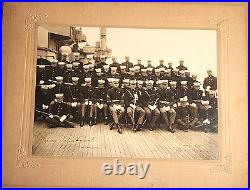
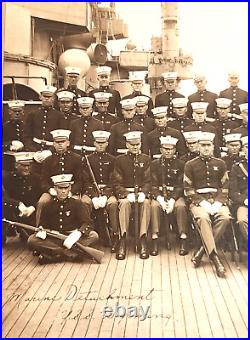
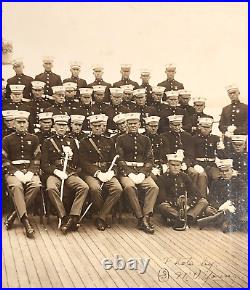
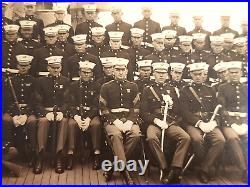
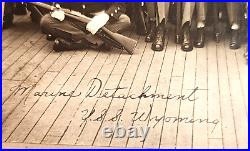




1921 USS WYOMING CABINET PHOTO UNITED STATES MARINE CORPS. The photo has some wear from normal use. There is writing on the back. 10 across x approx. (see photos for more details). Additional photos available upon request. Please specify details you would like to see more clearly.




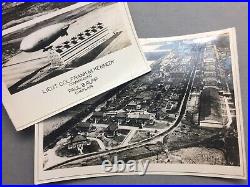


US Army TC-5 Zeppelin Airship Program 1933 Scott Field IL Real Photograph Lot 2. This is a lot of two real photographs for an airship program at Scott Field, Illinois in 1933. The photo with airship reads, ” Christmas Program Scott Field, IL 1933″ and, Lieut Col. Kennedy Commanding, Paul B. Look closely on zeppelin and you can read “TC-5″. This is an Army airship and it is flying over Scott Field hanger. A line of bi-wing planes is flying over the airship! I believe the planes were used to wrangle the zeppelin. The other photo came with the Program cover photo and has the same boarder and was probably part of the program. It shows part of Scott Field and hanger building. The TC-5 was designed for coastal patrol duty and was the first of its kind to land at East Boston Airport. This is a RARE item. These are real photos… My photos are of the actual item you are getting. See our store for other interesting Zeppelin photo item at Lambert Field. Book packages less than 5oz will be sent First Class. Items must be sent back within 5 days after return request. You may qualify for a cheaper rate. Thank you for looking.


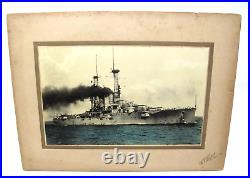
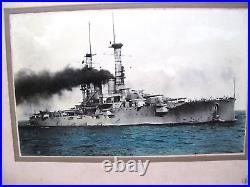
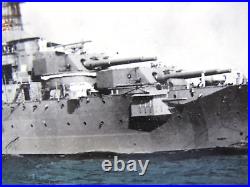





USS FLORIDA BB-30 W. California Color Tinted Photograph. Minor rubbing on corners. Color tinted photograph in laid down on cabinet card material. Light toning on edges of cabinet card material [see photo]. Sighted 4-7/8″ x 7-7/8″. Overall 10-3/4″ x 8″. Thank you for your interest in this item. I do not use recycled boxes, kraft or bubble mailers for these scarce Cruise Books.


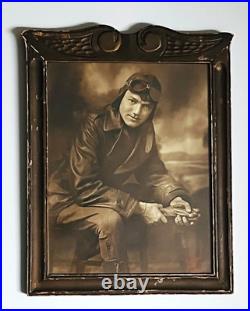
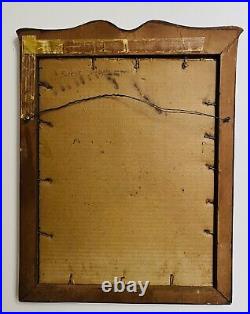
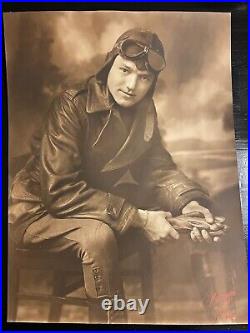
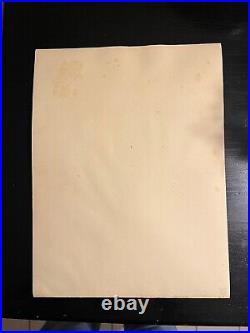



This is a Rare 1920’s Real Studio Photograph of Lt James “JImmy” Doolittle In original Wooden Frame. This photograph has been certified to be original. The frame shows some wear, but is original as well. The Photography studio was located in Rockville, IL. The photo measures 10″ X 13″ and Framed 12 1/2 X 16 1/2. This would make a great addition to any military collection.



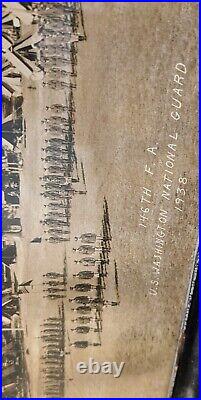
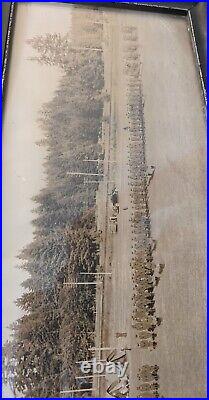
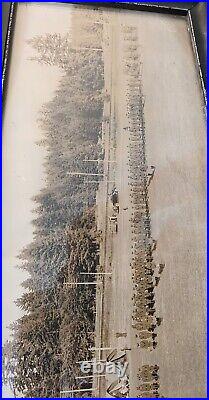






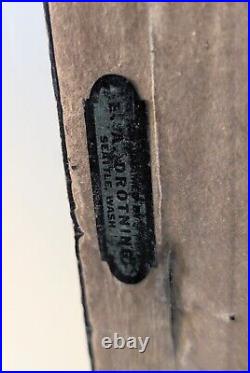


Huge 1930s panoramic “yard long” photograph. This 1930s panoramic Photo is of the 1938 146th FA Washington State US National Guard. The Photo is in its original frame. The Photo has a framers sticker on the back of looks like E. The photo is in fair to good condition for age. There are some ripples in the photo. There are a couple areas of black color loss lines down Photo (photo #6, might be manufacturing flaws). There is a small white emulsion loss on photo (pic # 7). Frame with inner beading losses. Frame AS IS with wear, scratches, losses etc… Scarce huge size at 56″ long by 9 1/2″ wide. Hard to find these old pandemic photos this size. Look at photos as they are considered part of the description. We have been long time collectors and dealers of early English Transferware, Quality 19th century furniture, and Victoriana. We always strive to describe the items to the best of our abilities. All items we sell are old and will show appropriate wear and tear, the pieces will not look brand new. They will have character. We are only responsible for the item while in our possession. We will pack all items VERY WELL with bubble wrap and peanuts(furniture will be packed by the shipper). Check out our other auctions for other early transferware and quality antiques.


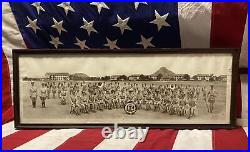
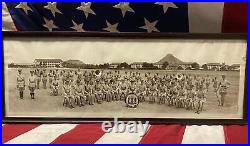
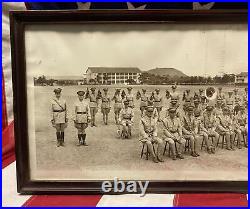
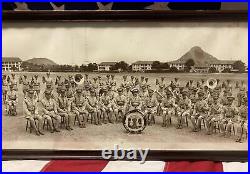


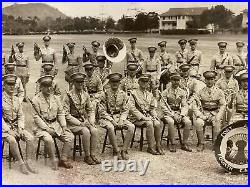
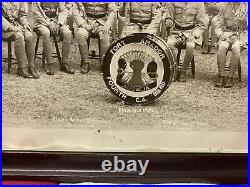
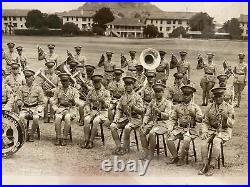
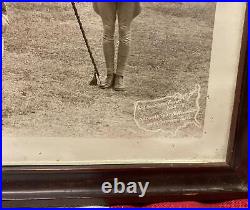

Vintage 1933 US Army Military Photograph Fourth CA Band Fort Amador Panama Canal. Please Be sure to see the Larger Size photos, directly below the Description. Vintage US Army Military Fourth C. From March 4, 1933. Fort Amador, at the Pacific end of the Panama Canal at Panama Bay. Antique Military Photograph Panoramic, Black & White Photograph shows the Military Band, Fourth C. Photograph is in it’s original Frame. Framed Size: 31 wide. Please refer to the pictures below, for all the specifics.. If you need any other info/details, or would like to see additional Pic. Will be calculated cost, UPS Ground, w/ Tracking # provided. If you are unsure about fit (measurements), or description of an item.. Get Supersized Images & Free Image Hosting. Create your brand with Auctiva’s. Attention Sellers – Get Templates Image Hosting, Scheduling at Auctiva. Com. Track Page Views With.



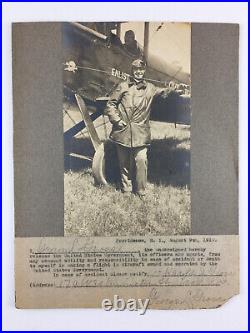

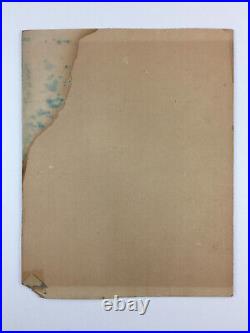

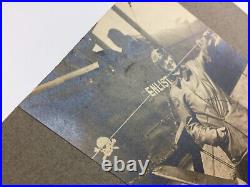
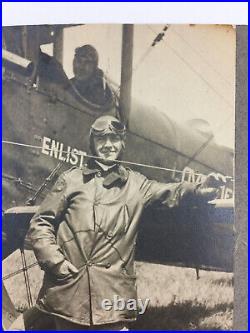

Mounted Photograph And Document – US Army Air Service Enlistment Tour , August 1919. Providence Rhode Island, August 9th, 1919. Mounted Silver-Gelatin Photograph of Biplane And Pilots of the Dallas-Boston Aerial Flight Squadron, With Government Liability Waiver Document (For Accident or Death During Flight in a Government Aircraft) Mounted Below, Signed by George L. Gross of Providence RI. 9 7/8 ” x 7 3/4 “. 7 3/8 ” x 4 3/8 “. In 1919 the Providence Chamber of Commerce invited the Dallas-Boston Aerial Flight Squadron of the U. Army Air Service to stop in Providence as part of a country-wide enlistment tour. Gross of the River & Harbor Committee along with other members of the Providence Chamber of Commerce were given the opportunity to be taken on flights over the Providence area. Gross was taken on one such flight and the attached document is his government flight accident / death waiver. The photograph depicts a piloted squadron biplane, with another pilot standing in front of the plane in the foreground. I believe the pilot in the foreground is Captain Herman Fluegel, though I can’t say with 100% certainty. The plane is decorated with a skull & crossbones, and marked “Enlist” & “Love Field”. The event is chronicled in the January 1919 issue of Providence Magazine Vol. Shows a little wear, the lower-right corner of the mount board is chipped, and the board has a moisture stain on the verso (doesn’t show through to the front side). Please see photographs for details. Feel free to send me any questions or request additional photos.






















































































